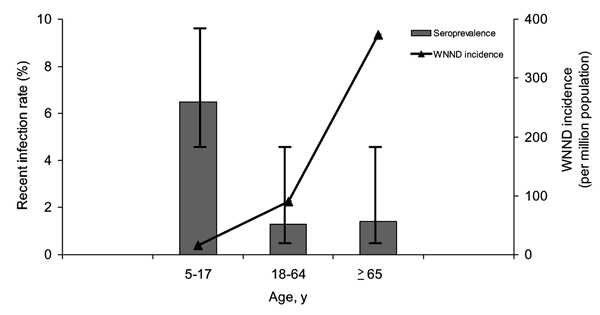Volume 11, Number 11—November 2005
Dispatch
West Nile Virus Epidemic, Northeast Ohio, 2002
Figure

Figure. Comparison of age-stratified seroprevalence rates (gray bars) to the age-stratified incidence of West Nile neuroinvasive disease (WNND) (black line). Seroprevalence rates were measured in the 2002 seroprevalence study. The incidence of WNND was based on cases reported through the local disease reporting system during the 2002 transmission season.
Page created: February 17, 2012
Page updated: February 17, 2012
Page reviewed: February 17, 2012
The conclusions, findings, and opinions expressed by authors contributing to this journal do not necessarily reflect the official position of the U.S. Department of Health and Human Services, the Public Health Service, the Centers for Disease Control and Prevention, or the authors' affiliated institutions. Use of trade names is for identification only and does not imply endorsement by any of the groups named above.